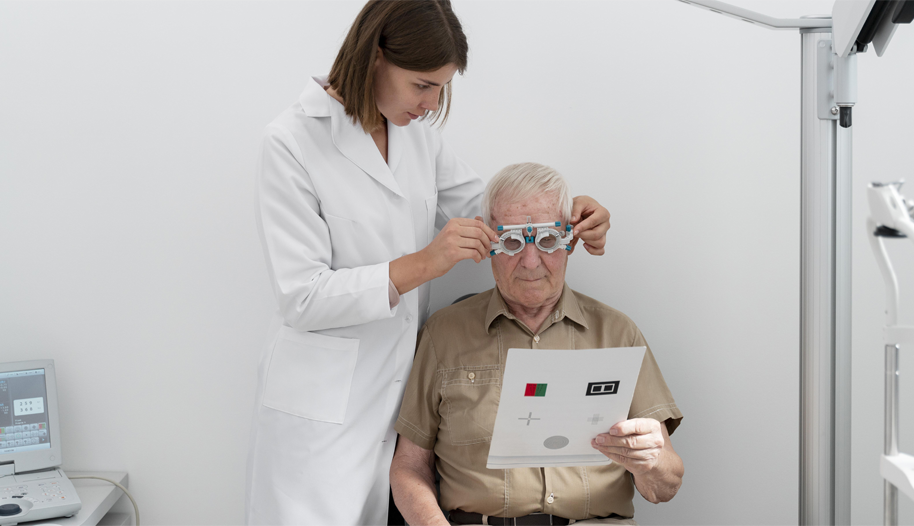Diabetic Eye Exam Specialist
Diabetes takes a toll on many systems of your body, and your eyes are no exception. Routine diabetic eye exams are a critical part of comprehensive diabetes care, and are available through Tayani Institute, with locations in Orange County, California. If you’re overdue for a diabetic eye exam or have recently been diagnosed with Diabetes, schedule an appointment today to get started. You can book an exam online or over the phone.
Diabetic Eye Exam Q & A
How does diabetes affect eye health?
Diabetes is a disease in which your body cannot properly convert glucose into energy. That leaves excess glucose trapped in your bloodstream, where it causes widespread damage throughout your body.
Chronic high blood sugar damages the tiny blood vessels that nourish your eyes. That can cause blood vessels in or near your retina to leak fluid.
If those blood vessels can no longer move blood, your body may respond by creating new blood vessels that can also leak. All that added pressure within your eye can cause your retina to detach, a condition known as diabetic retinopathy.
What is diabetic retinopathy?
The part of your eye that senses light and sends images to your brain is called the retina. Diabetic retinopathy happens when diabetes damages the blood vessels in your retina. This is the most common type of diabetic eye disease and if left untreated it can cause blindness.
Diabetic retinopathy is not always preventable. But getting regular eye exams, keeping your blood sugar and blood pressure under control, and getting help for vision problems as soon as possible can help keep you from losing your sight.
What is diabetic macular edema?
Your macula is the central portion of your retina, and is responsible for creating sharp vision in the area directly in front of your eyes. When diabetic retinopathy develops, fluid can build up near your macula.
An estimated half of men and women who have diabetic retinopathy will eventually develop diabetic macular edema, a condition that can lead to vision loss. While diabetic macular edema is more common in the advanced stages of diabetic retinopathy, it can occur at any stage.
What happens during a diabetic eye exam?
A diabetic eye exam allows your specialist to check your eyes for signs of damage. Part of the process involves dilating your eyes to allow your doctor to get a better view of the interior portion of each eye.
One type of screening is called optical coherence tomography. This process creates cross-section images of your eyes, which gives a detailed view of how thick your retina is and where potential leaking might occur from damaged blood vessels.
Another diagnostic tool is called fluorescein angiography. A special dye is injected into your arm and travels to the blood vessels within your eyes. Your doctor then examines those vessels to check for blockages and areas where leakage is likely to develop.
How can I prepare for my diabetic eye exam?
If you’ve noticed changes in your vision or discomfort in one or both eyes, be sure to share the details with your doctor during your visit. You’ll also want to note when the symptoms began and how high your blood glucose is at the time symptoms are present.
Be sure to mention any other health issues you’re experiencing, even if they are unrelated to your vision. If any type of action or treatment makes your symptoms subside, mention that to your doctor, as well.
If you have questions or concerns, bring a written list so you don’t forget anything. You might also want to write down your doctor’s advice on changes you can make to support healthier vision, or treatment options to consider.
Setting up a diabetic eye exam is as simple as a phone call or a visit to the online booking tool, so don’t delay.



